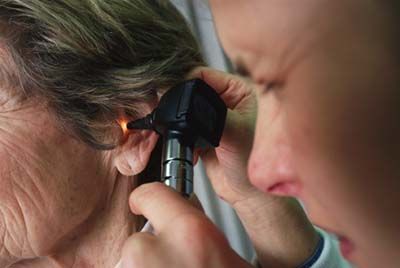Dry skin doesn't just occur on your face, arms and legs. It can appear anywhere on your body—including your ears. Although you probably don't discuss it with your friends, dry skin on the ears is actually quite common. It's often thought of as a form of dandruff, which means it can be treated the same way you'd deal with a dry, itchy scalp (hello, Head and Shoulders!). But sometimes, dry skin on the ears can be the result of a more serious condition. Read on to learn what causes dry skin on your ears—and what you can do to take care of it.
The causes: Seborrheic dermatitis and sunburn
Advertisement
Dry skin can occur on the ear or in the ear canal. It's usually the result of a condition known as seborrheic dermatitis, says Jody Levine, M.D., assistant clinical instructor of dermatology at Mount Sinai School of Medicine in New York City. "The cause of seborrheic dermatitis is complex," she says. "But it usually has to do with an overproduction of oil in the skin combined with the yeast that normally lives on the surface of your skin." It appears as dry, scaly patches that may even look greasy or moist. The areas may be yellowish or white. Some people may also complain of itching, which can occur on the ear or in the ear canal.
Dry skin on the outer ear or earlobe may also be the result of sunburn. "Ultraviolet rays from the sun actually kill off skin cells," says Joshua Zeichner, M.D., director of cosmetic and clinical research at Mount Sinai Medical Center in New York City. "When this happens, the dead cells are sloughed off (in the form of peeling) so that new, baby skin cells can replace them." Many people forget to apply sunscreen on their ears, which can result in actinic keratosis, a rough, scaly patch on your skin that develops from years of exposure to the sun [Source: Mayo Clinic]. Since it takes years to develop, actinic keratosis usually appears in older adults. But most doctors consider it to be a serious condition because it can eventually develop into skin cancer [Source: Mayo Clinic].
Advertisement


